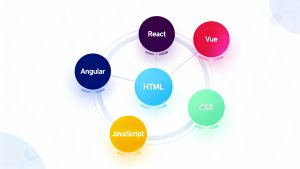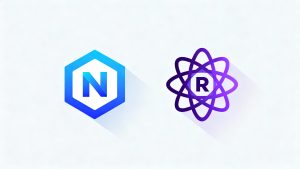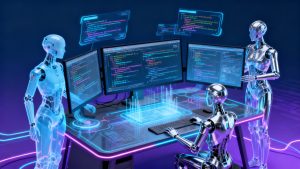The modern web development ecosystem is undergoing a dramatic transformation. With major industry events like Google I/O 2025 and Microsoft Build 2025, leading technology companies are rolling out innovative tools and platforms that promise to redefine how applications are built and deployed. These advancements are placing new pressures on traditional backend architectures, particularly the monolithic model, and raising important questions about where the future of development is headed.
The Tension Between Frontend and Backend
As organizations strive for faster release cycles and more dynamic user experiences, the debate over architectural choices has never been more relevant. Monolithic, microservices, and serverless architectures each offer distinct advantages and trade-offs. The rise of frontend-first development—where more logic and processing are moved to the client side—is challenging the dominance of server-side backends and prompting developers to reconsider long-standing assumptions about how applications should be structured.
The Rise of Frontend-First Development
Recent announcements from Google highlight a clear trend toward empowering frontend developers with new tools and frameworks. At Google I/O 2025, sessions dedicated to Chrome and Google Cloud showcased next-generation frontend tooling, including enhanced Chrome DevTools workflows and edge-optimized frameworks designed to offload logic from servers to the browser. Similarly, Android 16’s Material 3 Expressive design language introduces dynamic theming and on-device AI, signaling a shift toward smarter, more autonomous user interfaces.
“Why wait on the server when the browser can compute faster?”
— Anonymous Senior Frontend Engineer
This shift raises an important question: is it time to embrace a world where the client does the heavy lifting? As frontend tools become more sophisticated, the role of the backend is changing, with many organizations exploring ways to reduce server-side dependencies and deliver faster, more responsive user experiences.
The Resilience of the Monolithic Backend
Despite the momentum behind frontend-first development, the monolithic backend is far from obsolete. Microsoft’s launch of CoreAI—a new engineering division combining DevDiv and AI teams—demonstrates a continued commitment to building integrated, intelligent backend platforms. Features like pay-as-you-go Copilot Chat agents and Office AI capabilities further illustrate how monolithic architectures can be enhanced with embedded intelligence, offering robust, unified solutions that are easier to manage than sprawling microservices.
“A monolith that thinks with you beats a hundred microservices you can’t coordinate.”
— Anonymous Enterprise Architect
For many organizations, a well-tuned monolithic backend remains a viable and sometimes superior option, especially when enhanced with modern AI capabilities. The challenge is to strike the right balance between simplicity and flexibility, ensuring that backend systems can evolve alongside changing business needs.
Microservices vs Serverless: The Next Evolution
As the industry continues to innovate, the line between microservices and serverless architectures is becoming increasingly blurred. Rumors surrounding Microsoft Build 2025 suggest that Azure Maia 2, a next-generation AI accelerator, will enable fine-tuned, serverless inference workloads, allowing backend functions to spin up in milliseconds. Google I/O 2025 is also expected to spotlight generative AI in search and edge-function triggers, further dissolving the boundary between backend services and frontend events.
“Why maintain hundreds of containers when an on-demand function can do it all?”
— Anonymous Cloud Native Advocate
These developments suggest that microservices may be a stepping stone toward a more serverless future, where backend logic is dynamically scaled and managed by cloud providers. As serverless platforms become more capable, organizations may find it easier to build and deploy complex applications without the overhead of managing containerized services.
The Social and Ethical Implications of AI in Development
The growing role of AI in web development is not without its challenges. Rumors about deep AI integrations at WWDC 2025—including automated code generation, UI testing, and backend logic stitching—highlight the potential for AI to transform the development process. However, these advancements also raise important questions about job displacement and the future of junior developers.
“If AI writes your code, what’s left for junior devs to learn?”
— Anonymous Industry Observer
At Microsoft’s 50th Anniversary Copilot event, protesters voiced concerns about the broader implications of AI, including its use in geopolitics and the risk of widespread developer layoffs. As organizations adopt more AI-driven tools, it is essential to consider the social and ethical impact of these technologies, ensuring that the benefits are shared equitably and that opportunities for learning and growth remain accessible to all.
Looking Ahead: Predictions for the Future of Web Architecture
The debate over monolithic backends, microservices, and serverless architectures is far from settled. As the industry continues to evolve, several key trends are emerging:
- Monoliths with Embedded AI: Monolithic backends are expected to become “smarter” by incorporating AI layers, blending the best of both worlds—simplicity and intelligence.
- Serverless Dominance: Serverless functions are predicted to handle up to 80% of typical backend workloads by 2027, as organizations seek to reduce operational complexity and improve scalability.
- Evolving DevOps Roles: The role of DevOps engineers is likely to shift toward “AI-orchestration engineers,” focusing on pipeline automation and ethical governance as AI becomes more central to the development process.
Conclusion: A New Era for Web Development
The future of web development is marked by rapid innovation and shifting architectural paradigms. While frontend-first development and AI-driven tools are challenging the traditional dominance of monolithic backends, these architectures are adapting and evolving in response. The key for organizations is to remain flexible, embrace new technologies, and consider the broader implications of their architectural choices—both for their teams and for the industry as a whole.
Read more such articles from our Newsletter here.



